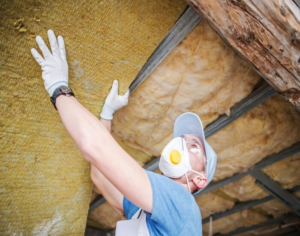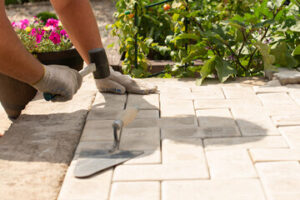Professionals use different methods for removing insulation depending on the type being removed. They also follow strict safety protocols when dealing with hazardous materials like asbestos.
To do this correctly, you’ll need to prepare a workspace with a ladder, a commercial vacuum, industrial-sized waste bags, and protective equipment. This will ensure that asbestos particles are not spread throughout your home. Contact Perth Insulation Removal now!

Insulation removal can be expensive, especially if you hire professionals to do it for you. However, it is a worthwhile investment for your home, as it can improve energy efficiency and reduce utility bills. It also removes pests and rodents that may have nestled in the old insulation, and it prevents them from entering your house through a hole or crack in your roof or wall.
The cost of insulation removal varies depending on the type and amount of insulation, as well as its condition. For instance, blown-in insulation can be more difficult to remove than batting or cellulose insulation. In addition, certain types of insulation can be removed by machine or by hand, which impacts the price per square foot.
You should also consider the cost of disposal when estimating the price of insulation removal. Fiberglass and cellulose insulation can be recycled, but you must check with local waste management authorities for details. Some places may charge a fee for recycling, while others will require that you bring your insulation in bags to their collection sites.
A dumpster rental is the simplest and most cost-effective way to dispose of old insulation. It can be placed in your driveway or the front of your house to allow you to easily access it. You can also use a dumpster to dispose of other debris from your attic renovation, such as spare lumber or drywall. It can even be used to store equipment and supplies for future projects.
The insulation removal process can be complicated, and you should always consult a professional before starting. A professional will inspect the attic space to determine the type and amount of insulation that needs to be removed. They can then provide a quote based on this information. It is important to note that you will need to pay for any associated fees or deposits, such as disposal charges, before the work begins.
Blown-in insulation is often found in attics and crawl spaces, but it can also be installed in walls and ductwork. This insulation is made from cellulose, fiberglass, and other materials and can be installed using different methods. In addition, blown-in insulation can be shaped to fill in corners and other hard-to-reach areas.
Time
Insulation removal can be a messy and time-consuming job. It is important to prepare your home for the project by covering walls and floors and making sure that there are clear pathways from the attic access point to the door. It is also essential to have the right equipment and safety gear, including a vaccum cleaner and disposable gloves. In addition, it is essential to sanitize the area after removing the old insulation.
The time required for insulation removal can vary depending on the size of your home and type of insulation. For example, blown-in insulation can take more time to remove than batt insulation. This is because blown-in insulation needs to be removed from between attic joists, which can be difficult without the right equipment. Additionally, blown-in insulation is often more contaminated with pest droppings and other debris, which can make the process more time-consuming.
It is recommended to use a professional team to carry out insulation removal and replacement. This will help ensure that the work is carried out in a timely manner and that the job is completed properly. In addition, professional insulation contractors will have the proper tools and experience to handle the task quickly and efficiently.
If you decide to DIY the project, it’s important to plan accordingly and allow plenty of time for the process. There are many factors that can affect the length of time it takes to remove and replace insulation, including the type of insulation and the level of contamination. In addition, if there are any issues with the attic space, such as mold or rodents, it may be necessary to clean and disinfect the area before reinsulating it.
While there are many signs that your insulation is deteriorating, some of the most common are visible damage to the attic floor and leaking water from the roof. It is also important to have regular inspections, so that any problems can be caught early and repaired before they become more serious. This will not only save you money, but it will also keep your home comfortable and energy-efficient for years to come.
Preparation
Insulation Removal is an important part of improving a home’s energy efficiency and indoor air quality. However, homeowners must be prepared for the project, especially if they are planning to do it themselves. Proper preparation can save homeowners time, money, and stress. In addition, it can help ensure a safe and successful project.
The first step in preparing for insulation removal is to determine the type of insulation. This step is crucial because different types of insulation require specialized removal methods. For example, spray foam requires a special solvent to soften it and remove it from walls. Identifying the type of insulation can also help prevent any damage to the walls or attic.
It is also essential to clear the attic before beginning the insulation removal process. This step will make the job much easier, and will also prevent any contamination or damage to belongings stored in the attic. Additionally, it is a good idea to cover the attic access hatch with a tarp to protect it from dust and debris. Lastly, it is important to wear personal protective equipment (PPE) when removing insulation. This includes rubber-coated gloves, a mask, and eye protection.
Another important step in preparing for Insulation Removal is to turn off or disconnect any power sources in the attic. This will prevent any accidental electrical damage and will ensure the safety of the workers. Insulation removal involves handling and using tools that can accidentally come into contact with live wires, posing a significant risk of electrical shocks or fire.
It is also a good idea to research potential insulation removal companies before hiring one. Look for a company with high customer reviews and relevant certifications. Additionally, consider a company that offers other services, such as air sealing and installing new insulation, to streamline the process. Finally, choose a company that has experience working with older homes. These companies will have the necessary expertise to address any issues that may arise during the process. They can also provide advice about selecting the best types of insulation for an older home.
Safety
While it’s possible to undertake insulation removal as a DIY project, hiring a professional is usually advisable. It can save time and money, especially if the insulation is contaminated with asbestos or other dangerous substances. Professionals are trained in safe removal techniques and have the proper equipment to handle the job. They also have the ability to provide additional services, such as rodent proofing and attic cleaning.
Before beginning, it’s important to prepare the work area for insulation removal. The attic must be clear of any furniture or other items that could be damaged during the process. It’s also a good idea to wear personal protective equipment (PPE) such as gloves, goggles, and a mask to protect against insulation fibers and dust. A high-powered vacuum hose designed for loose-fill insulation is also necessary, as well as heavy-duty waste bags.
During the removal process, it’s important to take regular breaks and keep a clear workspace. This will help prevent fatigue and reduce the risk of injury. It’s also recommended to use fans or open windows to increase ventilation and disperse harmful particles. Choosing a contractor who specializes in multiple types of insulation is also beneficial because they’re familiar with the unique challenges and requirements of each type.
The final step of the insulation removal process is vacuuming up any leftover debris. This can be done using a commercial hose or an industrial-sized vacuum cleaner. The process can be messy, but it’s essential to thoroughly clear out the attic before installing new insulation.
Insulation removal can be a time-consuming and costly process, but it’s often necessary to ensure the health and safety of homeowners. There are many indicators that old insulation may be in need of replacement, such as water damage or mold growth. In addition, older insulation can be inefficient, leading to higher utility costs. By replacing insulation with new materials, homeowners can save energy and improve their comfort.








